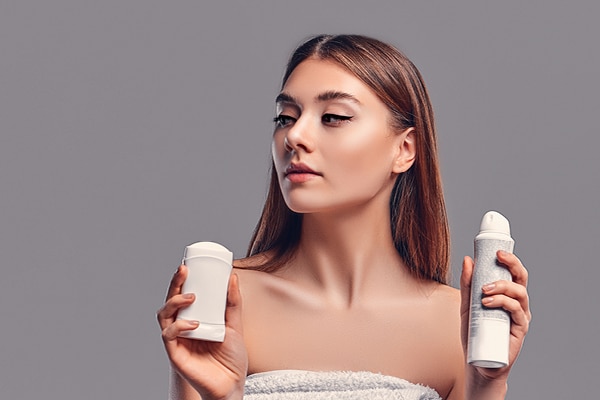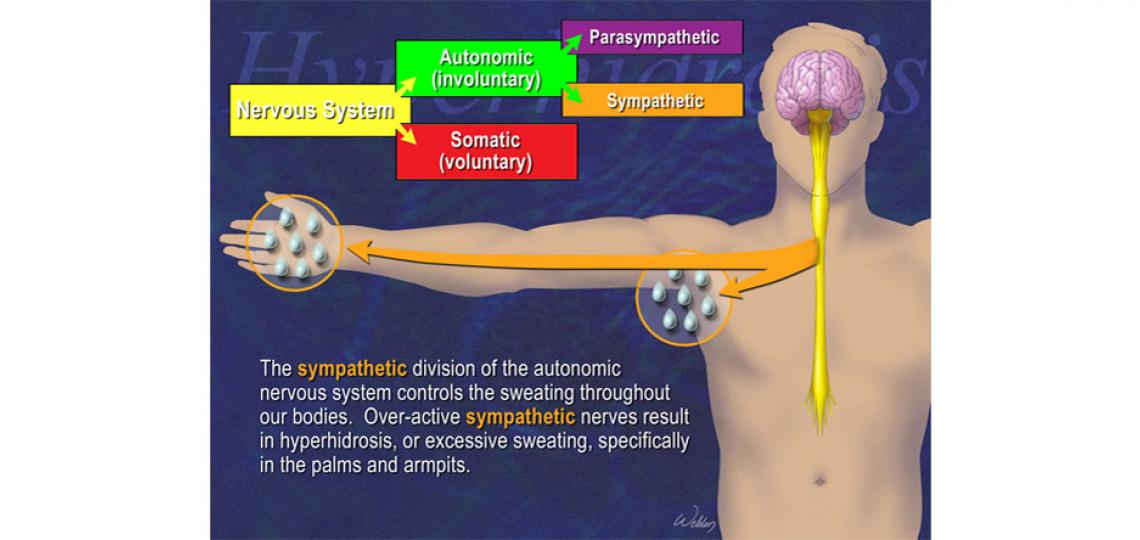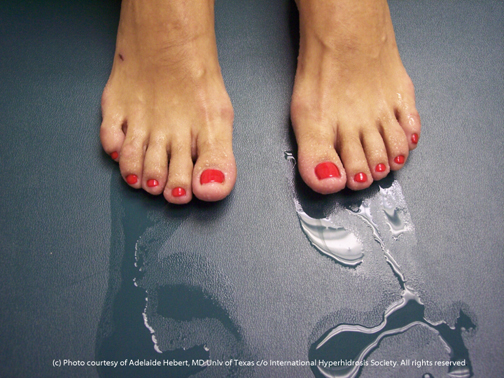Leading Dermatology Treatments for Hyperhydrosis of Hands and Feet: What You Need to Know
Leading Dermatology Treatments for Hyperhydrosis of Hands and Feet: What You Need to Know
Blog Article
Unveiling the Intricacies of Excessive Sweating: A Comprehensive Overview to Diagnosis and Administration
Too much sweating, clinically known as hyperhidrosis, is a problem that impacts a considerable number of people and can have an extensive effect on their high quality of life. While sweating is an all-natural physical feature, its overactivity in hyperhidrosis provides a special collection of challenges that usually go beyond mere discomfort.

Recognizing Hyperhidrosis Causes
Hyperhidrosis triggers can be attributed to various factors such as genes, hormone imbalances, and particular clinical problems. Genetics play a significant duty in key focal hyperhidrosis, where people acquire the condition from their household members. By identifying the particular factors adding to too much sweating, health care service providers can customize therapy strategies to attend to the underlying cause, supplying relief and enhancing the high quality of life for individuals influenced by hyperhidrosis.
Recognizing Hyperhidrosis Symptoms

Furthermore, hyperhidrosis signs may show up in social and emotional distress, as people might really feel embarrassed or nervous concerning their sweating, causing avoidance of social situations (Exessive Sweating). In addition, repeated episodes of too much sweating can lead to skin maceration, fungal infections, and a total reduction in self-confidence
Diagnostic Process for Hyperhidrosis
Launching the diagnostic process for too much sweating includes thorough assessment of the individual's medical background and health examination. Making inquiries about the onset, duration, and activates of sweating episodes is vital to distinguish in between primary focal hyperhidrosis and secondary generalized hyperhidrosis. Clinical background should likewise include inquiries about medicines, clinical conditions, and family background of hyperhidrosis.
Throughout the health examination, specific interest is paid to the locations affected by sweating. The medical care service provider may analyze the degree of sweating, check for indications of underlying problems, and assess the influence of sweating on the person's lifestyle. In addition, specific examinations like the gravimetric examination, starch-iodine test, or skin conductance measurements may be carried out to measure the amount of sweat created.
In addition, in instances where second hyperhidrosis is thought, extra tests such as blood examinations, pee tests, and imaging studies might be recommended to identify the underlying root cause of excessive sweating. The analysis procedure aims to properly establish the kind and cause of hyperhidrosis to lead suitable monitoring approaches.
Treatment Options for Hyperhidrosis
When attending to extreme sweating, various therapy alternatives are available to relieve signs and enhance the individual's high quality of life. The treatment strategy for hyperhidrosis depends upon the seriousness of signs and the patient's feedback to initial therapies.
Topical therapies, such as aluminum-based antiperspirants, are frequently recommended as the initial line of defense for managing moderate situations of hyperhidrosis. For people with a lot more severe signs and symptoms, oral medicines like anticholinergics might be suggested to aid reduce sweating.

Effective Management Techniques
To effectively handle hyperhidrosis, a go to website extensive and customized therapy strategy customized to the client's particular demands and feedback to previous treatments is crucial. This strategy may integrate a mix of therapeutic techniques, consisting of way of living modifications, topical therapies, oral medications, botulinum contaminant shots, iontophoresis, and in extreme instances, medical interventions like sweat gland removal or sympathectomy. Lifestyle alterations such as wearing moisture-wicking apparel, utilizing antiperspirants, and exercising stress-reducing strategies can match clinical treatments. Topical antiperspirants having aluminum chloride are frequently the first-line therapy, with stronger formulas offered for immune situations. Oral medicines like anticholinergics may be suggested for generalised hyperhidrosis. Botulinum toxin shots are efficient for focal hyperhidrosis, supplying momentary relief by obstructing the launch of acetylcholine. Iontophoresis, involving using a reduced electric current to minimize gland activity, can be advantageous for both palmoplantar and axillary hyperhidrosis. Surgical alternatives are commonly scheduled for extreme, refractory situations and call for cautious factor to consider of threats and advantages. A multidisciplinary strategy involving skin specialists, medical care doctors, and, if required, specialists, can optimize the management of hyperhidrosis.
Final Thought
Finally, hyperhidrosis is a condition identified by excessive sweating, which can significantly affect an individual's quality of life. By recognizing the reasons, acknowledging the symptoms, and undertaking the analysis procedure, his explanation healthcare providers can successfully manage this condition. Therapy alternatives include topical drugs, dental medicines, check that shots, and also medical procedures in extreme situations. With appropriate diagnosis and administration techniques, people experiencing hyperhidrosis can locate alleviation and enhance their total wellness.
Excessive sweating, medically recognized as hyperhidrosis, is a problem that impacts a significant number of individuals and can have a profound effect on their top quality of life. By recognizing the certain factors adding to excessive sweating, health care service providers can customize therapy plans to resolve the underlying reason, offering alleviation and improving the top quality of life for individuals influenced by hyperhidrosis.
Hyperhidrosis, identified by extreme sweating past what is essential for controling body temperature, can significantly affect an individual's quality of life. Inquiring regarding the beginning, duration, and causes of sweating episodes is essential to set apart between main focal hyperhidrosis and additional generalized hyperhidrosis. Sweaty hands treatment.In conclusion, hyperhidrosis is a problem characterized by too much sweating, which can substantially affect an individual's top quality of life
Report this page